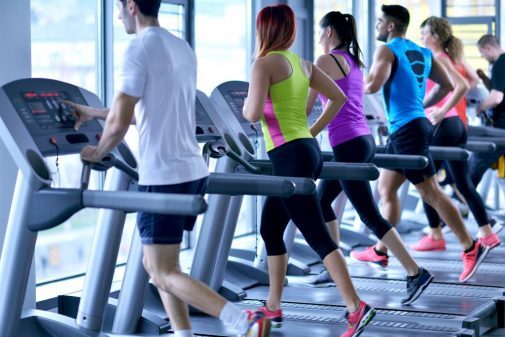5 myths about working out

If you’re someone who is nervous about getting back to the gym, don’t be. Tips about health and fitness and what you should and shouldn’t do can be overwhelming because you don’t want to make the wrong first move. But it’s important to remember one workout routine is not perfect for everyone.
“I recommend experimenting with different styles of training to see what is effective for your health,” says Joe Ozanic, personal trainer at Advocate Good Shepherd Health & Fitness Center in Barrington, Ill. “When you are experimenting with fitness and nutrition plans, stick with a six to eight week program. This gives you enough time to figure out if the plan is providing results for you.”
In addition to trying new things, Joe wants you to reduce your anxiety about going back to the gym. He says you should take note of the following exercise myths:
Myth #1: Skip breakfast before a morning workout.
The topic of early-morning fasted cardio has been debated, but there isn’t sufficient evidence to support the claim that you can increase the amount of fat burned during and after your workout if you skip breakfast. Joe says you should always fuel your body properly before physical activity to ensure you have the energy to workout at an intensity high enough to produce results.
Myth #2: Only follow one workout regimen.
There is a benefit to sticking with similar exercises for a six to eight week program because you can objectively measure progress from the start of the program to the end. But your body will eventually reach a plateau once it becomes comfortable with your current routine. If your program consists of mostly cardiovascular exercises, adding strength training into your program will increase your power output and the endurance of your muscle.
If your preferred program consists mostly of strength training, adding cardiovascular exercises will improve the efficiency of your heart and circulatory system and increase the amount of available oxygen in your working muscles.
Myth #3: Treadmill workouts give you the best results.
There are other forms of exercise that burn more calories per hour than your typical workout on the treadmill. Rowing burns more calories because you are using more than 80 percent of the muscles on your body. Regardless of which machine you choose, you will burn more calories during your workout if you train with intervals instead of a comfortable, steady pace. Start off simple and alternate between high and low intensities every 30 seconds; each week, increase the time you spend in the high interval or decrease the time you spend in the low interval. Strength training might burn less calories during your workout, but in the long term, it increases the amount of calories you burn throughout the day.
Myth #4: You have to be sore after a workout.
Soreness is not the best indicator of a good workout. Your goal doesn’t have to be working out until you can’t raise your arms or walk up the stairs. Aim for lifestyle goals like getting to the gym four times a week or drinking five water bottles a day. The goal should be consistency and progressively trying to improve your health and wellness over the course of your life.
Myth #5: You should never exercise at night.
There are some people that have trouble falling asleep at night if they work out in the evening, and there are others that have no trouble at all. If you’re having trouble sleeping after an evening workout, try to keep track of your caffeine intake and cut yourself off at a consistent hour every day so your body can adjust to a schedule. Exercise, regardless of what time of day you perform it, has been proven to promote a higher quality of sleep.
“Most importantly, take some time to rest,” says Joe. “If you’re working out every day, there’s a higher chance you could get injured. So it is a good idea not to lift heavy every day, but you don’t have to avoid the gym all together. On rest days, you can perform some light-intensity cardio, participate in an active hobby, or help your muscles recover faster by foam rolling and stretching.”
Related Posts
Comments
About the Author

Liz Donofrio, health enews contributor, is a marketing specialist at Advocate Health Care. As a newlywed, she is happy to be done planning her wedding and enjoying spending time with her husband and new extended family. In her free time, you can find Liz cooking new tasty recipes for her family, attending Chicago sporting events and chasing after her shih tzu-yorkie, Buttons.
















